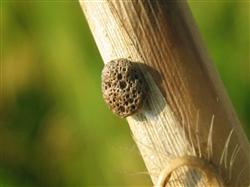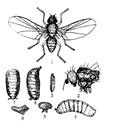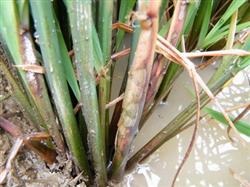How to control rice sheath blight?

How to control rice sheath blight? When will the detailed control of rice sheath blight begin? Please help guide the harm of rice sheath blight to rice is very serious, the best control method is to prepare to plant rice from the beginning, the following is a detailed introduction of the control methods and reasons for netizens' reference. First, salvaging the sclerotia: sheath blight mainly depends on the sclerotia to survive the winter in the rice field. When the overwintering sclerotia passes through winter and spring to early rice transplanting, 60% to 70% of the sclerotia can germinate. There is a certain relationship between the number of sclerotia in the field and the disease. In the fields with serious disease last year or last season, the sclerotia in the fields were lighter than water, and could float with the water for a long time. After irrigation in the paddy field, the sclerotia floating on the water surface could be removed, which could reduce the bacteria source of the first infection and effectively reduce the early incidence of rice. The method of removal is to properly deepen the water layer after raking the field surface, and then use tools such as a dustpan to pick up the wave residue and sclerotia floating on the surface of the water, lift them away from the paddy field, bury them deeply or dry them and burn them. Second, from the fertilizer and water management prevention and control methods: strengthen fertilizer and water management to improve the disease resistance of seedlings. Late application of nitrogen fertilizer and long-term irrigation in deep water can easily lead to soft and green stems and leaves, serious closure and reduce disease resistance and aggravate the occurrence of sheath blight. Therefore, in the fertilization strategy, we should grasp the following three principles: first, attach importance to base fertilizer, apply more farm manure and organic fertilizer, and the general amount of base fertilizer should account for 60% of the total fertilizer application. Second, the rational collocation of nitrogen, phosphorus and potassium, especially the application of nitrogen fertilizer should not be excessive. Third, topdressing should be early and appropriate, and it should be applied according to the method of "pre-weight, middle control and post-supplement". Nitrogen fertilizer should not be applied too late, so as not to cause greed of grain seedlings and lead to sheath blight. In the water pipe, the irrigation methods of shallow, dew, rest and living are carried out to solve the contradiction between water and gas in the soil. In the tillering stage of rice, frequent irrigation in shallow water and proper open field should be carried out in order to detoxify and increase gas, promote root and strong tiller; shelve the field at the end of tillering stage, control invalid tiller and restrain the growth of stems and leaves; after entering the booting stage, live water irrigation should be carried out; to the filling stage, we should adhere to dry and wet, promote seedling growth elegant, disease-free to old. Third, the use of chemical control methods: the occurrence of rice sheath blight generally developed slowly in the early stage and increased rapidly in the later stage. Therefore, the field investigation should be strengthened during the peak tillering period of early rice, and the field disease rate should be controlled immediately when the disease rate in the field is about 30% in hot and humid weather. Medicament can choose Jingangmycin powder 1 kg per mu or Jinggangmycin water 0.2 kg to water 50 kg, and according to the degree of disease and weather conditions, spray 2-3 times. The growth period of late rice is short, and the interval between the onset and outbreak of sheath blight is generally about half a month. Therefore, it is appropriate to use the medicine twice in the evening, usually once at the jointing and booting stage, and once again after 7 days. In view of the fact that the sheath blight extends upward from the lower part of the diseased plant, spraying should be focused on the middle and lower part of the rice plant in order to get a good effect. When the disease is serious, you can choose 10% rust amine emulsion per 667m2250ml or 25% wettable powder 50-70g per 667m2, spray 75L of water, the effect is good and the effect is long. 77% Hufengan (copper hydroxide) wettable powder 700 times liquid or Lubang 98 rice special 600 times solution or 25% strychnine wettable powder 100g can be selected to prevent water 75L at the beginning of booting and the end of booting, respectively. the disease rate, the rate of diseased plants and the severity of disease spots in functional leaf sheath are all significant, and the functional leaves are protected effectively. It can also be used at the booting stage to effectively control rice sheath blight, leaf sheath rot, rice false smut and rice grain smut. It can also treat many kinds of diseases in the middle and later stage of rice. Get more rice planting techniques click to get more food crop planting techniques
- Prev

How to control rice leafminer?
Growing rice this year, we found that there are a large number of leaf miners in the field. What are the hazards of rice leaf miners? How to control rice leafminer? Ask netizens to help introduce and guide the methods to control the harm of rice leaf miner and the control methods in the following detailed introduction and control methods for the majority of netizens' reference. Hidden leaves of rice.
- Next

How to control rice sheath blight?
What is the harm of rice sheath blight? How to control rice sheath blight? Netizens are also asked to help introduce the harm of rice sheath blight into leaf sheath disease, leaf disease and stem disease, which are described in detail as follows. Leaf sheath disease: dark green water-immersed edge blurred spots appear near the water surface, and then gradually expand into an oval or.
Related
- The first cup of black tea in spring, the flavor and history of tea gardens in Kenya, Africa
- The computer can not only choose potatoes, but also grow tea rice. AI will grow winter oolong tea champion.
- It is not only the inflated tea bitten by insects, but also engraved with the four seasons tea in Beipu.
- The Oriental Beauty Tea Festival in Zhuxian County takes the stage at the weekend to experience the plus-size feast of oil tea.
- & quot; Oriental Beauty Tea & Exploration of Emei in Hsinchu, the hometown of quot;
- The new variety of strawberry "Tainong 1" dessert is the first choice with mellow aroma. Crimson gorgeous
- History of Tea in Taiwan: from Wild Inner Mountain to Export Tea Garden
- Two types of Taiwan Oriental Beauty Black Tea won the British three-Star Award for Childhood Tea Xiang Zhang Jiaqi changed from pilot to champion tea maker.
- Banana species and varieties: the planting history of Taiwan Xianren banana and dwarf banana is long, is banana disease resistant?
- Coffee planting Technology: Qianjie Coffee from Seedling to harvesting

